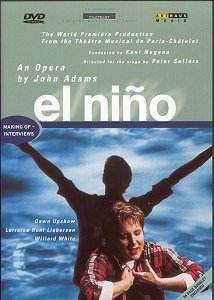 Composer: Astor Piazzolla
Composer: Astor Piazzolla
Works: Tangazo, Adiós Nonino, Milonga del ángel, Double Concerto for bandoneon and guitar, Oblivion, Tres movimientos tanguísticos porteños, Danza criolla
Performers: Daniel Binelli (bandoneon), Eduardo Isaac (guitar), Orchestre Symphonique de Montreal, conducted by Charles Dutoit
Recording: Église St-Eustache, Montreal – 18th May 2000
Label: Decca 468 528-2
Astor Piazzolla, a titan of the tango and a revolutionary figure in 20th-century music, stands as a bridge between the traditional forms of Argentine tango and the expansive horizons of jazz and classical music. His compositions are imbued with the spirit of Buenos Aires, yet they transcend geographical boundaries, reflecting a universal emotional landscape. The present collection serves as a vivid testament to his mastery and innovation, bringing together the lush orchestrations and the compelling intricacies of his “tango nuevo” style.
The performance led by Charles Dutoit with the Orchestre Symphonique de Montreal, featuring the virtuosic bandoneonist Daniel Binelli and guitarist Eduardo Isaac, captures the vibrancy and color of Piazzolla’s works with notable clarity and conviction. The orchestral arrangement of “Adiós Nonino,” perhaps Piazzolla’s most celebrated piece, opens with a stark, almost jarring percussion that sets an intriguing tone. This unsettling introduction quickly dissolves into a more reflective and nostalgic mood, mirroring the emotional complexity that characterizes much of Piazzolla’s oeuvre. The interplay between the orchestra and Binelli’s bandoneon is particularly striking; the bandoneon’s plaintive voice weaves through the orchestral fabric, creating a dialogue rich in sentiment.
The “Milonga del ángel” follows with a sensuousness that evokes images of a sultry Buenos Aires night, the orchestration here is delicate yet rich, allowing the melodies to float gracefully. Dutoit’s direction allows the orchestra to breathe, creating an atmosphere that is both intimate and expansive. Piazzolla’s “Oblivion” features a haunting oboe that sings a lamenting line, supported by lush string harmonies, drawing the listener into a world of yearning—a testament to Piazzolla’s ability to convey deep emotional narratives through his music.
The “Double Concerto for Bandoneon and Guitar” is a highlight, showcasing the unique timbral qualities of both instruments. The balance achieved in the recording allows for an intricate interplay between the melancholic introspection of the opening and the exuberant vivacity of the tango sections. The performance shines particularly in the “Milonga” movement, where the dialogue becomes a playful yet passionate exchange, a hallmark of Piazzolla’s writing. Here, the rhythmic vitality is infectious, and the technical prowess of both soloists is on full display.
The “Tres movimientos tanguísticos porteños” is an orchestral tour-de-force that evokes a plethora of emotions and images, from the furtive opening to the jubilant conclusion. The urban pulse of Buenos Aires is palpable, with the orchestra navigating complex moods and textures. The central movement’s nostalgia is palpable, as the tempo gradually heats, leading to a vibrant conclusion that employs fugal techniques and colorful orchestration. Dutoit’s interpretation here is especially noteworthy; he balances the intricacies of Piazzolla’s rhythms with the lushness of the orchestral sound, creating a rich tapestry that invites the listener to savor each musical detail.
Sound quality and engineering are exceptional, capturing the vivid colors of Piazzolla’s orchestrations while providing a clear delineation of ensemble and soloist roles. The recording, made in the resonant space of Église St-Eustache, enhances the overall listening experience, allowing the music’s emotional depth to resonate fully.
The fusion of tangos, jazz, and classical elements in this recording is not merely a novelty; it is a profound exploration of cultural identity and musical expression. Piazzolla’s works demand not only technical proficiency but also an emotional engagement that Dutoit and his Montreal ensemble deliver with aplomb. This collection is a compelling invitation to explore the rich landscape of Piazzolla’s music, offering both seasoned aficionados and newcomers a vivid glimpse into the heart of tango nuevo. An essential addition to any classical or tango enthusiast’s collection, this recording serves to affirm Piazzolla’s definitive place in the pantheon of great composers.


